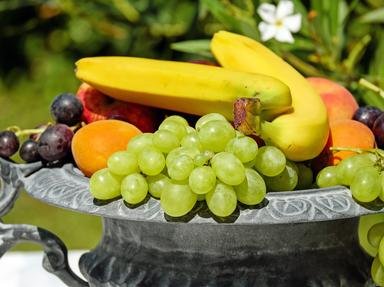Quiz Answer Key and Fun Facts
1. Which of these delicious berries does not grow on a shrub, but on a tree whose leaves have an important non-culinary use?
2. If, during a stay in Italy, you enjoyed amarene in syrup as a topping for your ice cream, what kind of summer fruit would you be consuming?
3. The cross-section of which of these fruits looks like a five-pointed star?
4. Which of these heady beverages is distilled from apples in the French region of Normandy?
5. What tropical fruit, also known as "granadilla" or "maracujá", is often used as a topping for pavlova, a popular Australian meringue-based dessert?
6. What small stone fruit, also known as Chinese date, is widely eaten in Asia, where it is enjoyed in a variety of ways?
7. A grape cultivar from North America is named after which New England town, known for its role in the American Revolutionary War?
8. Which of these orange-coloured fruits, native to East Asia, is called "kaki" in Japanese?
9. The name of which tangy fruit spread - a breakfast staple in the British Isles - comes from the Portuguese word for "quince"?
10. What thick-skinned citrus fruit, called "etrog" in Hebrew, is associated with the Jewish holiday of Sukkot?
Source: Author
LadyNym
This quiz was reviewed by FunTrivia editor
Bruyere before going online.
Any errors found in FunTrivia content are routinely corrected through our feedback system.
